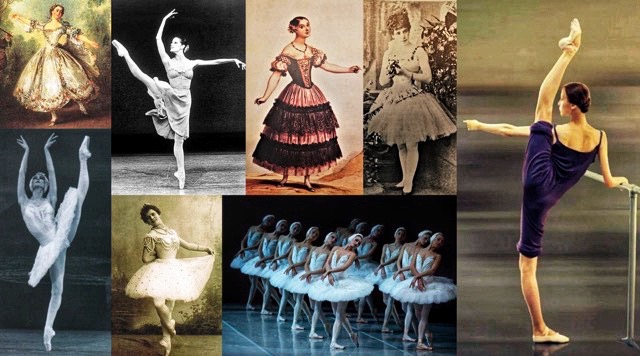
Today, a ballerina must have a firm, trained body

The physique of ballet dancers from the Renaissance to the present day was the central research topic of Tina Nerat, a graduate of the Alma Mater Europaea Academy of Dance, who, in her final thesis, showed how the physiques of ballet dancers have changed throughout history.
When discussing the ideal figure of a ballerina, we have in mind a slim girl with a long neck, short torso, narrow waist, firm muscle tone, strong, flexible back, and long, elegant legs and arms. "Today's repertoire requires a new type of body, the so-called 'hired body.' This is the body that allows a dancer to engage in other activities besides ballet, such as aerobics and various training programs and sports," says Tina Nerat, emphasizing that this was not always the case. "During the Renaissance, fuller figures, accentuated buttocks and legs, a round stomach, small breasts, strong thighs and hips, and a round face and neck were considered beautiful. In the Enlightenment, corsets became popular, which lifted a woman's breasts and narrowed her waist. During the romanticism, the ideal of female beauty was strengthened with a fragile body, tiny hands, and feet," describes the graduate and continues that in the first half of the 1960s, attention was shifted to the lower part of the body. The girls should have had slender legs and narrow hips. Girls thus began to interfere with diets because corsets were no longer fashionable.
"Today, a ballerina must have a firm, trained body. Since ballet is a visual art, ballet dancers are responsible for taking care of their bodies. This is how the stereotype of the ballerina developed at the beginning of the 21st century. We dare to say that the physical ideal of a ballerina developed with Agrippina Vaganova, the first to demand predispositions for ballet dancers who could attend her school," points out Tina Nerat. She adds that as a result, girls quickly feel the pressure, start to worry about their physical weight, and how quickly they begin to believe that they will be more successful when they lose weight. Thus, it can soon happen that they become ill with one of the eating disorders. "Anorexia and bulimia are the most common, resulting in injuries during training. To avoid this, dancers need a high-quality diet, which increases their energy reserves, strengthens the immune system, and enables the most efficient exercise possible," the graduate Tina points out. She adds that a healthy diet is necessary to increase energy reserves, strengthen the immune system and enable the most efficient exercise possible. With a nutritious diet, the body will be less tired, which leads to a reduced risk of various diseases and injuries.
A good balance of foods in your daily diet is best: 55% complex carbohydrates (pasta, whole grains, fruit), 20% lean protein (turkey breast, tofu, fish), and 25% unsaturated fat (olive oil, nuts). "You also need to drink 1.5 liters of water a day, which helps eliminate toxins in the body," concludes the graduate.

